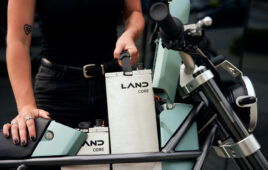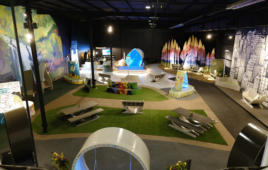 One critical role for space science today is looking back on our home planet, and using highly sensitive satellites to observe conditions and changes on the Earth—truly taking the idea of stepping back for a better view to new heights. When NASA launched its environmental research satellite last year, it carried sensitive Soil Moisture Active Passive (SMAP) instrumentation that used mission-critical cooling components from k Technology, a division of Thermacore.
One critical role for space science today is looking back on our home planet, and using highly sensitive satellites to observe conditions and changes on the Earth—truly taking the idea of stepping back for a better view to new heights. When NASA launched its environmental research satellite last year, it carried sensitive Soil Moisture Active Passive (SMAP) instrumentation that used mission-critical cooling components from k Technology, a division of Thermacore.
The SMAP mission is designed to help scientists understand the links between Earth’s water, energy and carbon cycles. Functioning as an Earth observatory in space, the satellite improves the ability of weather forecasters and climate scientists to monitor and predict natural hazards, such as floods, landslides and droughts. SMAP soil moisture data are used by agricultural and water resource managers to develop water and climate models. The SMAP project is managed for NASA by the Jet Propulsion Laboratory, with participation by the Goddard Space Flight Center. Throughout the SMAP mission, internal heat generated by the satellite’s electronics must continually be rejected into the cold and vacuum of outer space.
To meet this difficult thermal challenge while maintaining strict weight and size limits, NASA called upon Thermacore’s thermal management and engineering expertise to develop a unique heat spreader—also known as a doubler—to cool a critical electronics bus panel.
Instead of using typical aluminum heat-spreader material, the doubler uses k-Core Annealed Pyrolytic Graphite (APG) encapsulated within aluminum to form a composite panel. The six-millimeter thick panel is a sandwich comprised of an aluminum exterior shell that is 1 mm thick on each side wrapped around a 4-mm thick APG core. The advanced APG material enabled the large 0.7-m long and 0.7-m-wide panel to achieve a significant weight reduction of approximately 15 kg without sacrificing thermal performance.
The hard anodized plate was finished to support an array of thermal attachment points, thermally and electrically conductive areas, plus grounding areas. According to Mark Montesano, VP of Engineering, Thermacore k Technology Div., “The complex finishing requirements presented a challenging design. This project involved a detailed mechanical design as well as a finite element thermal analysis to determine component locations and specific geometry of the APG insert within the structure.”
The thermal/mechanical analysis identified such variables as graphite-edge distances and thru-hole features. The team undertook a predictive-performance analysis using an iterative process with JPL to determine optimum locations and component configuration. From that point, engineering drawings were generated for all the components, which were then released to the company’s fabrication facility for graphite machining, composite assembly and machining, plating and inspection. The panel was then shipped to JPL for bench testing, preflight evaluation and then installation on the spacecraft for the January 2015 launch.
In addition to the advanced thermal solution for the SMAP mission, the company will provide a k-Core thermal strap for the thermal clock on the JPL GRACE Follow-on Mission. Scheduled for launch in 2017, this mission will measure the change in water stored on land from precipitation that has been stored as snow, that infiltrated into the ground or evaporated, or that left the basin as stream flow.
Thermacore
thermacore.com
Filed Under: Green engineering • renewable energy • sustainability





Tell Us What You Think!